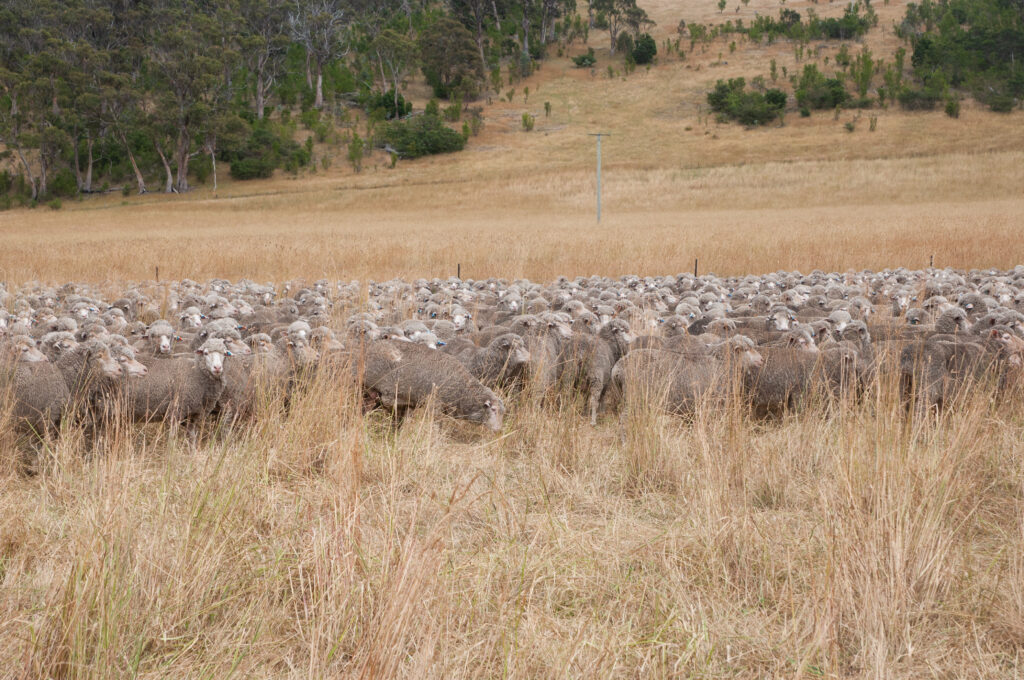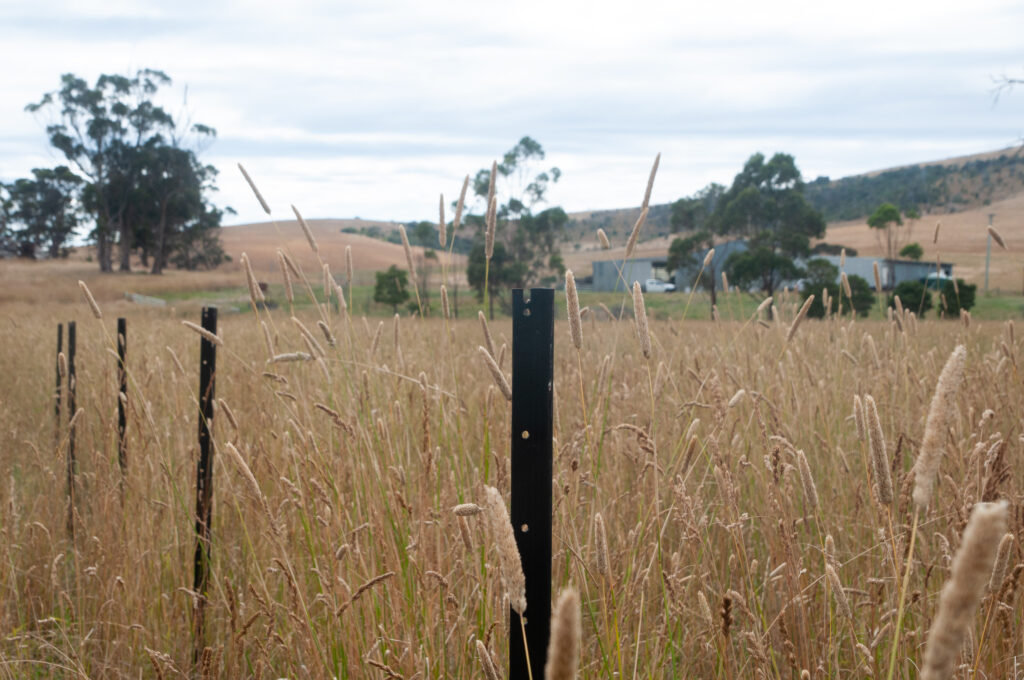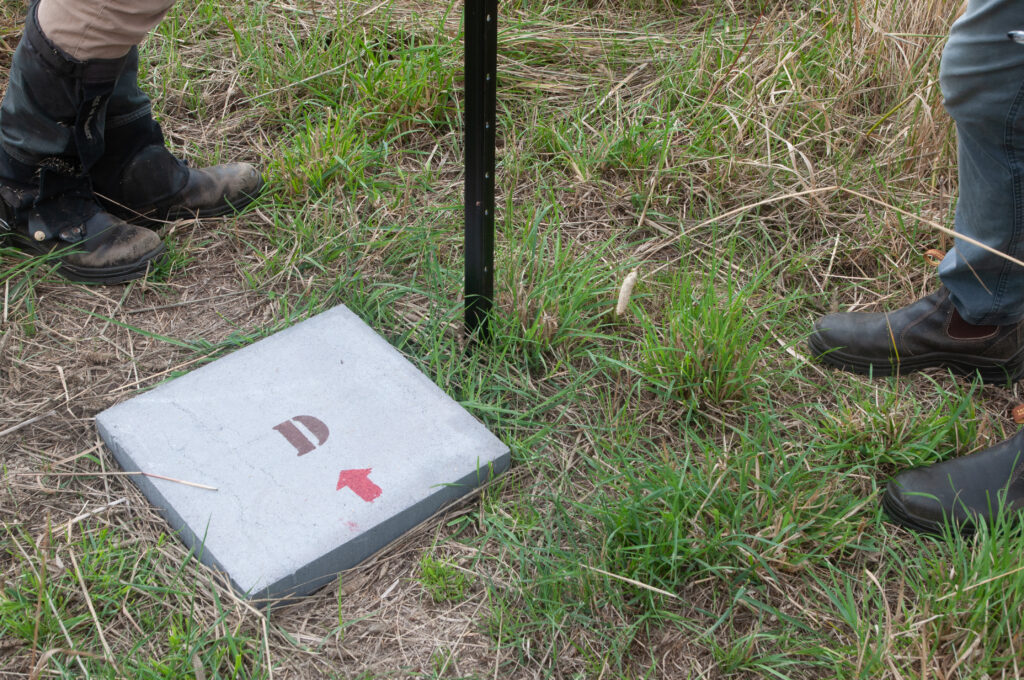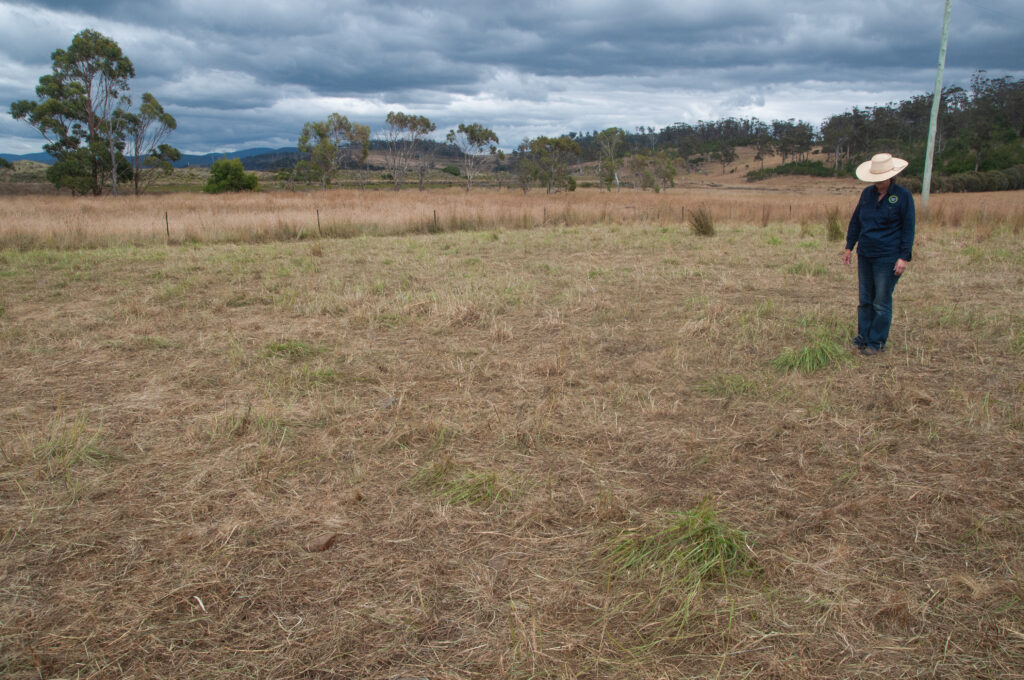A regenerative grazing project at Okehampton (Cape Herbert Pty Ltd), a sheep grazing property near Triabunna on Tasmania’s east coast, is using cutting edge technology and pasture management to optimise grazing impact to improve drought-resilience.
Using an approach which focuses on increasing the landscape function of the soils, the trials are using high stock density and pasture utilisation, followed by various rest periods for the areas. The project will test recovery periods between 3 and 15 months and compare them to ‘business-as-usual’ rotationally grazed areas to see which approach yields the best response for improved water infiltration, nutrient cycling, and pasture density and diversity. Monitoring has now begun on the different grazing plots and the project team are assessing pasture and soil surface conditions in the paddock using drones and remote sensing technology, alongside field observations and biomass measurements.
Cape Herbert Pty Ltd purchased the 1,400 hectare property in 2018. Director Jason Whitehead hopes that the project will assist in developing a future grazing plan based on a regenerative, low-input, low risk grazing system for the property – reducing their exposure to financial, production and environmental risks. “We are looking to optimise the layout of our paddocks based on information about land condition, land type, infrastructure and stock movement. We’re aiming to break up the larger paddocks into smaller blocks to allow greater control of grazing, though there are some pros and cons to this approach. The project will allow us to set parameters to allow us to achieve this plan. We are on a transitional journey, we’re not there yet, but heading in the right direction. The findings of this project will be shared with others grazing sheep in drought prone areas of Tasmania, as Cape Herbert Pty Ltd is a Tasmanian Drought Hub partner.”
This exciting project at Okehampton is being delivered in partnership with Cape Herbert Pty Ltd, the University of Tasmania (Geography, Planning and Spatial Sciences and the Tasmanian Institute of Agriculture), Regenerative Agricultural Network Tasmania, Enviro-dynamics, Cibolabs, Glamorgan Spring Bay Council and pakana Services, and with assistance from Grindstone Pastoral (current farm lease holder). As a communication partner, NRM South looks forward to sharing the learnings of the project with farmers down the track. This project is jointly funded through Australian Government’s Future Drought Fund and Cape Herbert Pty Ltd.






